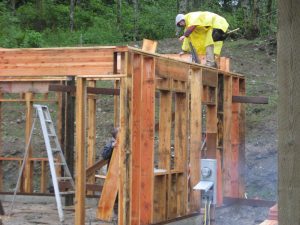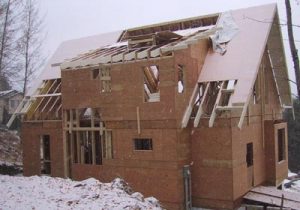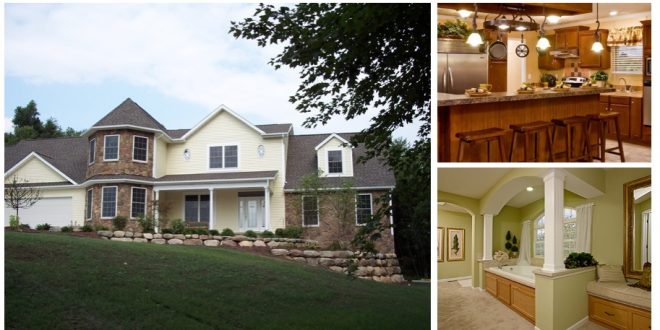When you’re planning to purchase or build a new home, you’ll have to choose what kind of house you want — site-built, manufactured or modular. There are slight differences to each type and all have their own pros and cons.

“A newly constructed home may be any of the following three types: manufactured, modular or traditional site-built,” says Kevin Clayton, CEO of Clayton home building group. “Whichever type selected will be built to strict state and federal code and can vary by style, custom features available, energy-efficiency, speed of construction and affordability.”
Having a home built for you has many advantages. You have more control over location, and can choose the exact features and design you want. What’s more, if the area you’re interested in has a small market of existing homes, building your own may help you get into a house faster and for less money.
If you’re considering having a new home built, here’s some information you should know about these three types of construction:
Site-built homes
As the name implies, this construction method assembles the house on the site where it will permanently stand when finished. All the materials that go into the house — from wood for the frame to pipes for the plumbing and shingles for the roof — are transported to the site for assembly of the house, which could take several months. Transporting and buying exact measurements of building materials that will be used (versus buying bulk) contributes to the final cost of the house.

During construction, materials may be stored onsite and exposed to weather until construction crews are ready to use them. Similarly, the interior of the home is exposed until the roof, walls and windows are all in place. These homes are subject to various state and local building codes to ensure safety before the home is ready to be sold.

Site-building is a time-tested, traditional way of building homes, and is the most common method of construction. Construction times vary, but can range from less than three months to a year, according to data from the U.S. Census Bureau’s Survey of Construction (SOC). The average price per square foot of a single-family site-built home was just over $100 in 2015, SOC data shows.
Manufactured homes
Instead of being constructed on-site, manufactured homes are built in a controlled factory environment using many of the same building materials used in site-built homes. The entire house is assembled in the factory in sections and then transported by truck to the home site for final installation.
Manufactured homes are subject to internal inspections and must meet building standards defined by the U.S. Department of Housing and Urban Development (or HUD) to receive final certification. Because the house is constructed indoors, the construction schedule is not subject to weather delays, so a manufactured home can be completed and set up on-site in a matter of weeks, rather than months.
Manufactured homebuilders purchase construction materials and appliances in volume, which helps keep the cost of manufactured homes lower than what you would pay for a site-built home. In 2015, the average cost of a manufactured home was just $47.55 per square foot, according to SOC data. In general, a manufactured home can be a much more affordable option and can be customized from the ground up, just like traditional housing.
Modular homes
Modular homebuilding combines elements of site-built and manufactured home construction. In modular home construction, the home may be either 100 percent factory-built or a mix of both factory-built and on-site built.
Modular homes can ship to the home site fully complete or with work left to be done. This allows for modular homes to be as fully customizable and unique as their site-built counterparts.
Often in modular construction, the home is shipped in sections that are assembled at the site by use of a crane. The home is typically placed onto a permanent foundation and can be multiple stories high. Modular homes can also have basements, garages and unique roof profiles that make them indistinguishable from traditional site-built homes.
All the building codes that apply to site-built homes also govern modular homes. Because much of the construction takes place inside a factory setting with a constant supply of building materials in stock, modular homes can also be completed faster than site-built homes. They also benefit from similar bulk cost-savings as manufactured homes.
More to consider
The type of construction you choose will depend on your needs, budget and preferences. Advances in manufactured and modular homebuilding mean it’s now possible to build one of these homes with the same high-end features you would find in a quality site-built home. What’s more, energy-efficient construction, green features, and available ENERGY STAR upgrades help ensure heating, cooling and lighting your manufactured or modular home will be just as effective as a green site-built home.
Want to know what home best fits your personality? You can take an online quiz to find out.
To learn more about homebuilding options and to find a manufactured home retailer near you, visit www.claytonhomes.com.
ENERGY STAR and the ENERGY STAR mark are registered trademarks owned by the U.S. Environmental Protection Agency. ##
(Editor’s Notes: The links, photos, captions and videos used in this article have been added by MHLivingNews. Another, third party look at the comparison between manufactured and modular homes is linked here.
For those looking for clarity on why a mobile home is not the same as a manufactured home, click here.
Note too that Clayton has divisions that do on-site construction, as well as manufactured and modular home building. Clayton Homes is a sponsor for LifeStyle Factory Homes, LLC – parent company of MHProNews and MHLivingNews. This article first appeared in the Carbondale News, at this link here.)
 manufacturedhomelivingnews.com Manufactured Home Living News
manufacturedhomelivingnews.com Manufactured Home Living News































